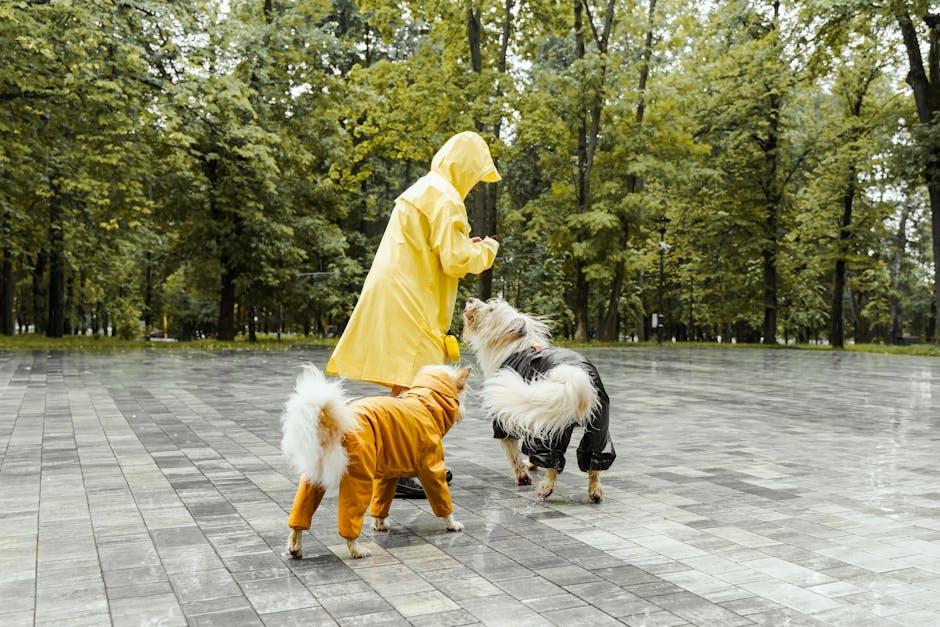Aggressive behavior in dogs is a concern that resonates deeply with pet owners, animal lovers, and communities alike. It can be both heart-wrenching and daunting to witness a beloved pet exhibit signs of aggression, whether towards people, other animals, or even inanimate objects. However, understanding that aggression is often a symptom rather than a character flaw opens the door to hope and healing. In this article, we will explore the potential for rehabilitation in aggressive dogs, shedding light on the underlying causes of their behavior, the strategies that can transform fear and uncertainty into trust and calm, and the crucial role of patience and compassion in this journey. With the right approach and resources, aggressive dogs can often learn to navigate the world in a healthier, more harmonious way, paving the path for happier lives for both the dogs and their human companions. Join us as we delve into the heartwarming possibilities of rehabilitation, where every step forward is a testament to the resilience and capacity for change inherent in all creatures.
Understanding the Root Causes of Aggression in Dogs
When it comes to understanding what drives a dog to display aggressive behaviors, it’s crucial to look beyond the surface. Dogs, much like humans, can exhibit aggression due to a variety of underlying factors. Some of the most common causes include:
- Fear: Often, aggression is a defensive response to perceived threats. A dog that feels cornered or frightened might lash out as a way to protect itself.
- Territoriality: Dogs are naturally territorial animals. Aggression can occur when they feel their space is being invaded or when protecting their resources.
- Frustration: Known as redirected aggression, this occurs when a dog is unable to reach the object of its frustration, leading to aggressive behavior.
- Socialization: Lack of proper socialization during the critical early stages of life can result in a dog that is fearful or aggressive towards unfamiliar people or animals.
- Health Issues: Sometimes, aggression can be a sign of an underlying health problem. Pain or discomfort can make a dog more irritable and prone to aggression.
Recognizing these root causes is the first step in the rehabilitation process. By addressing these underlying issues with patience and understanding, we can begin to guide our canine companions towards a more balanced and peaceful demeanor.

Creating a Safe Environment for Rehabilitation
Creating a nurturing atmosphere is essential when working with dogs that exhibit aggressive behaviors. This begins with ensuring that the environment is calm, controlled, and free from potential stressors. Here are some key elements to consider:
- Structured Routine: Consistency helps in reducing anxiety. Establish a daily routine that includes feeding, exercise, and training at the same times each day.
- Positive Reinforcement: Use rewards like treats and praise to encourage good behavior, which helps in building trust and confidence.
- Safe Spaces: Designate areas where the dog can retreat to if they feel overwhelmed. This could be a quiet room or a comfortable crate.
- Controlled Socialization: Gradually introduce the dog to new people and other animals in a controlled manner to prevent overstimulation.
Remember, patience and understanding are crucial. Every dog progresses at their own pace, and it’s important to celebrate small victories along the way.

Effective Training Techniques for Aggressive Dogs
Understanding and addressing aggression in dogs requires a compassionate and structured approach. Positive reinforcement is a cornerstone technique, focusing on rewarding desired behaviors rather than punishing negative ones. This method helps to build trust and a strong bond between the dog and its handler. Consider incorporating the following strategies:
- Clicker Training: Use a clicker to mark the moment your dog exhibits a calm behavior, followed by a treat. This creates a clear connection between the action and the reward.
- Desensitization: Gradually expose your dog to triggers that provoke aggression in a controlled manner, starting from a distance and slowly decreasing it as they become more comfortable.
- Counter-Conditioning: Pair the presence of a trigger with something positive, like treats or playtime, to change your dog’s emotional response over time.
Another vital aspect is ensuring consistent routines. Dogs thrive on predictability, and a structured daily schedule can significantly reduce anxiety-related aggression. Regular exercise and mental stimulation are also crucial, as they help to channel excess energy and keep your dog’s mind engaged. Remember, patience and persistence are key, and seeking guidance from a professional trainer can provide additional support tailored to your dog’s specific needs.

Building Trust and Strengthening Bonds with Your Dog
Fostering a harmonious relationship with your dog, especially one displaying aggression, requires patience and understanding. Building trust is crucial, as it helps in mitigating fear-based behaviors. Here are some key steps to strengthen the bond with your furry friend:
- Consistency: Establish a routine that your dog can rely on. Regular feeding times, walks, and play sessions help create a sense of security.
- Positive Reinforcement: Reward your dog with treats, praise, or playtime for displaying calm and friendly behaviors. This encourages them to repeat these actions.
- Calm Environment: Ensure your home is a sanctuary free from stressors that might trigger aggression. Consider using soothing music or scents to promote relaxation.
Understanding your dog’s body language is also vital. This insight allows you to anticipate their needs and reactions, fostering a deeper connection. By adopting these practices, you lay the groundwork for a trusting relationship that not only rehabilitates but also enriches the life of your canine companion.

